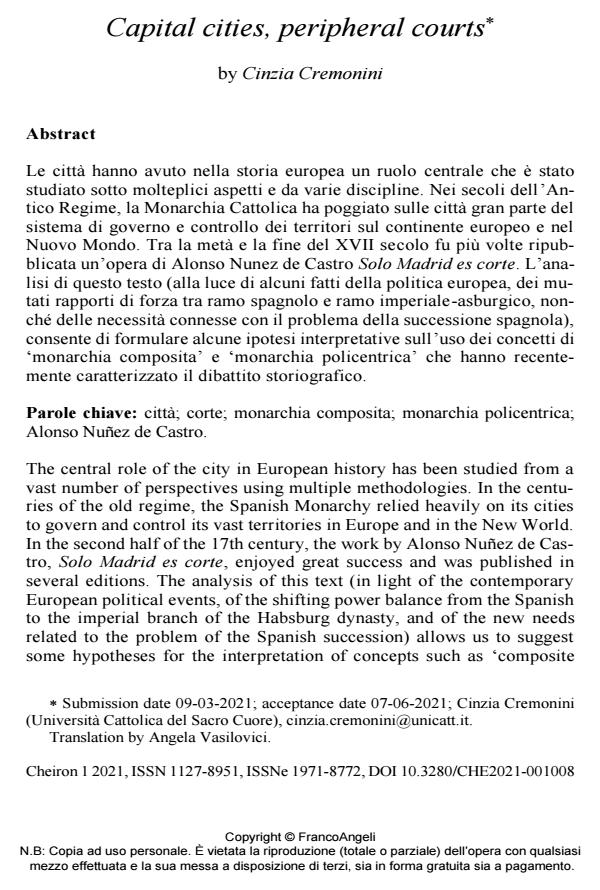Capital cities, peripheral courts
Journal title CHEIRON
Author/s Cinzia Cremonini
Publishing Year 2022 Issue 2021/1
Language English Pages 20 P. 174-193 File size 275 KB
DOI 10.3280/CHE2021-001008
DOI is like a bar code for intellectual property: to have more infomation
click here
Below, you can see the article first page
If you want to buy this article in PDF format, you can do it, following the instructions to buy download credits

FrancoAngeli is member of Publishers International Linking Association, Inc (PILA), a not-for-profit association which run the CrossRef service enabling links to and from online scholarly content.
The central role of the city in European history has been studied from a vast number of perspectives using multiple methodologies. In the centuries of the old regime, the Spanish Monarchy relied heavily on its cities to govern and control its vast territories in Europe and in the New World. In the second half of the 17th century, the work by Alonso Nuñez de Castro, Solo Madrid es corte, enjoyed great success and was published in several editions. The analysis of this text (in light of the contemporary European political events, of the shifting power balance from the Spanish to the imperial branch of the Habsburg dynasty, and of the new needs related to the problem of the Spanish succession) allows us to suggest some hypotheses for the interpretation of concepts such as ‘composite monarchy’ and ‘polycentric monarchy’ that have recently characterized the historiographical debate.
Keywords: Cities; Court; Composite Monarchy; Polycentric Monarchy; Alonso Nuñez de Castro
Cinzia Cremonini, Capital cities, peripheral courts in "CHEIRON" 1/2021, pp 174-193, DOI: 10.3280/CHE2021-001008